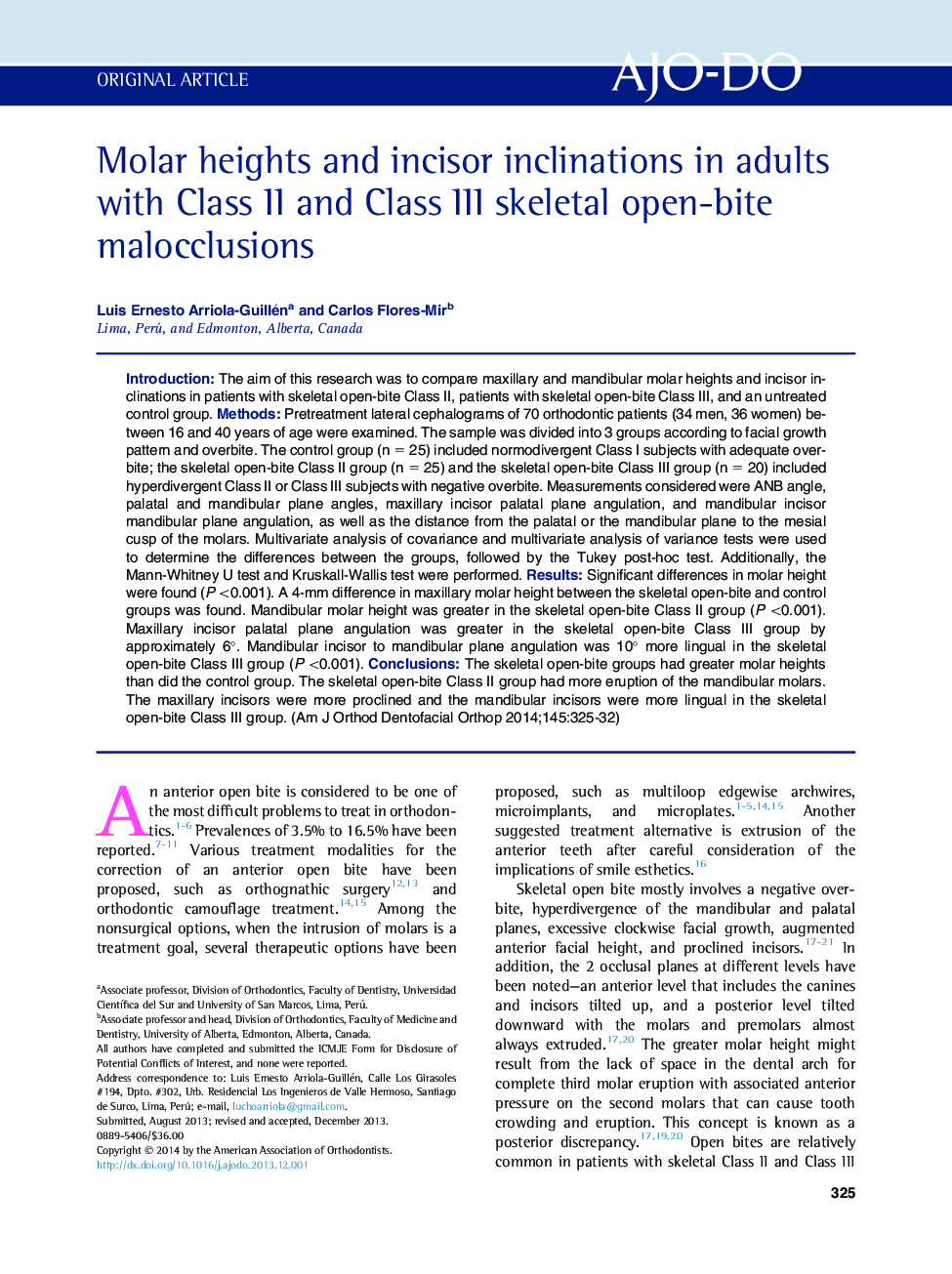| Article ID | Journal | Published Year | Pages | File Type |
|---|---|---|---|---|
| 3116587 | American Journal of Orthodontics and Dentofacial Orthopedics | 2014 | 8 Pages |
IntroductionThe aim of this research was to compare maxillary and mandibular molar heights and incisor inclinations in patients with skeletal open-bite Class II, patients with skeletal open-bite Class III, and an untreated control group.MethodsPretreatment lateral cephalograms of 70 orthodontic patients (34 men, 36 women) between 16 and 40 years of age were examined. The sample was divided into 3 groups according to facial growth pattern and overbite. The control group (n = 25) included normodivergent Class I subjects with adequate overbite; the skeletal open-bite Class II group (n = 25) and the skeletal open-bite Class III group (n = 20) included hyperdivergent Class II or Class III subjects with negative overbite. Measurements considered were ANB angle, palatal and mandibular plane angles, maxillary incisor palatal plane angulation, and mandibular incisor mandibular plane angulation, as well as the distance from the palatal or the mandibular plane to the mesial cusp of the molars. Multivariate analysis of covariance and multivariate analysis of variance tests were used to determine the differences between the groups, followed by the Tukey post-hoc test. Additionally, the Mann-Whitney U test and Kruskall-Wallis test were performed.ResultsSignificant differences in molar height were found (P <0.001). A 4-mm difference in maxillary molar height between the skeletal open-bite and control groups was found. Mandibular molar height was greater in the skeletal open-bite Class II group (P <0.001). Maxillary incisor palatal plane angulation was greater in the skeletal open-bite Class III group by approximately 6°. Mandibular incisor to mandibular plane angulation was 10° more lingual in the skeletal open-bite Class III group (P <0.001).ConclusionsThe skeletal open-bite groups had greater molar heights than did the control group. The skeletal open-bite Class II group had more eruption of the mandibular molars. The maxillary incisors were more proclined and the mandibular incisors were more lingual in the skeletal open-bite Class III group.
